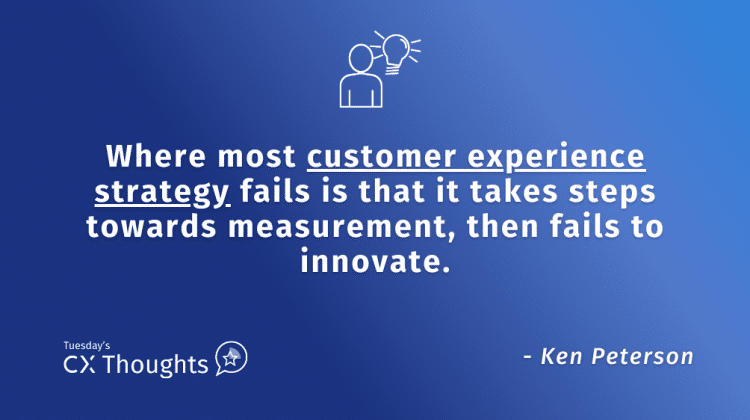 Reading Time: 3 minutes read
Reading Time: 3 minutes read
When you think about your sit-down restaurant experiences, are there any that really stand out to you? Sure, I could think about the fun experience at a hibachi grill or a restaurant where you might cook your own food. However, if you think of the traditional customer journey, not much has really changed over the years. You have decision criteria which usually involves a decision on type of cuisine and sometimes distance and reservation availability (if applicable).
From there, you get your transportation, get seated, order and eat. At the conclusion of the experience, you’re afforded your first opportunity to give “feedback” in the form of a tip at the conclusion of the meal. Then you may get a survey request on your receipt or on the table like this one below. Perhaps one more opportunity with a social media review. With any decent customer experience software platform, there will be a customer feedback loop and perhaps some sentiment analysis.
Note: Not actual restaurant QR Code
It certainly is one approach to getting an understanding of the customer experience, but in taking the survey, with just one question and one open-end, there will be very little that can be done to innovate. This is an appropriate time to review the customer journey map.
Where most customer experience strategy fails is that it takes steps towards measurement, then fails to innovate. Sure, a vendor will provide a financial linkage analysis that will work for some of the customer experience touchpoints but will fail with other touchpoints. It is necessary to get buy-in for a program from top executives, but often there is little convincing needed to be done, most are convinced enough to already have a budget and a department for understanding the customer experience.
Where most programs lose their luster is that it does not offer solid operational fixes and does not provide innovation to make the experience go beyond just “satisfactory” and moving it into a realm of delight.
Ultimately, your CX Enterprise Software should go beyond the basics of measurement and inner loop closed-loop feedback (which can be seen as mostly tactical). It is why we have invested heavily into our Outer Loop closed-loop feedback tool which can take root cause analytics – either from inner loop closed-loop feedback analytics or derived from our QuestionPro exclusive NPS+ question type – to allow firms to build a strategy towards what will improve the experience.
To make certain we capture the entire Voice-of-the-Customer, we also deploy social media analysis in the form of our QuestionPro CX Reputation license, which also connects to our closed-loop feedback tools – both inner loop and outer loop. To ensure buy-in, we can even deploy employee experience tools that can allow firms not only to monitor the employee experience, but to also create a strategy around the measurement, called Empower. Still, where is the innovation?
While QuestionPro has all the “experience tools”, the platform provides full-featured communities that can be used to recruit customers to help you to innovate – to engage with customers that want to engage with your brand. Let them interact, vote on each other’s ideas (by the way, that can also be done using QuestionPro NPS+) and find a way to innovate.
Next time a restaurant decides it is time to update their customer journey template to innovate, use that QR code to recruit them into a community – even better, you can recruit them directly from a QuestionPro Customer Experience survey using that same QR code. Measurement, along with the ability to respond and innovate.
Is there something wrong with your customer experience?
When you complete an honest assessment, the outcome can be beneficial, particularly when it comes to your Customer Experience program.
Take five minutes and complete an audit for your organization here.
You may discover a gap in measurement, an opportunity to improve a process, the place where an organizational shift needs to take place or an opportunity to win a greater share of your customers’ wallets.
We all want that bigger “return”. In this situation, the worst case scenario is that you’ll get some information that will help your organization since there is no cost or obligation in completing this audit.




















